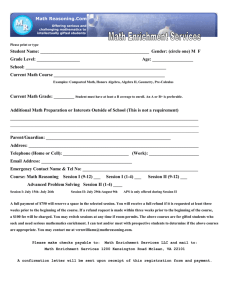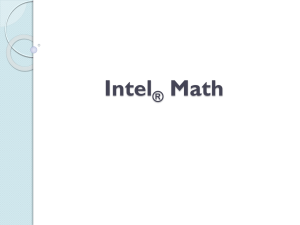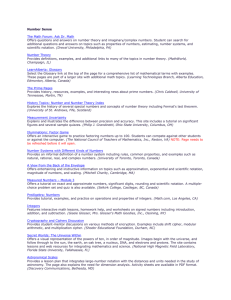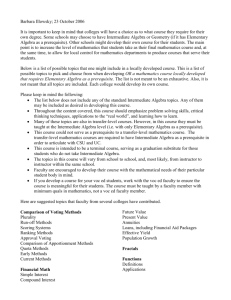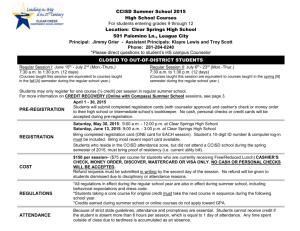Click Here - Steve Leinwand
advertisement
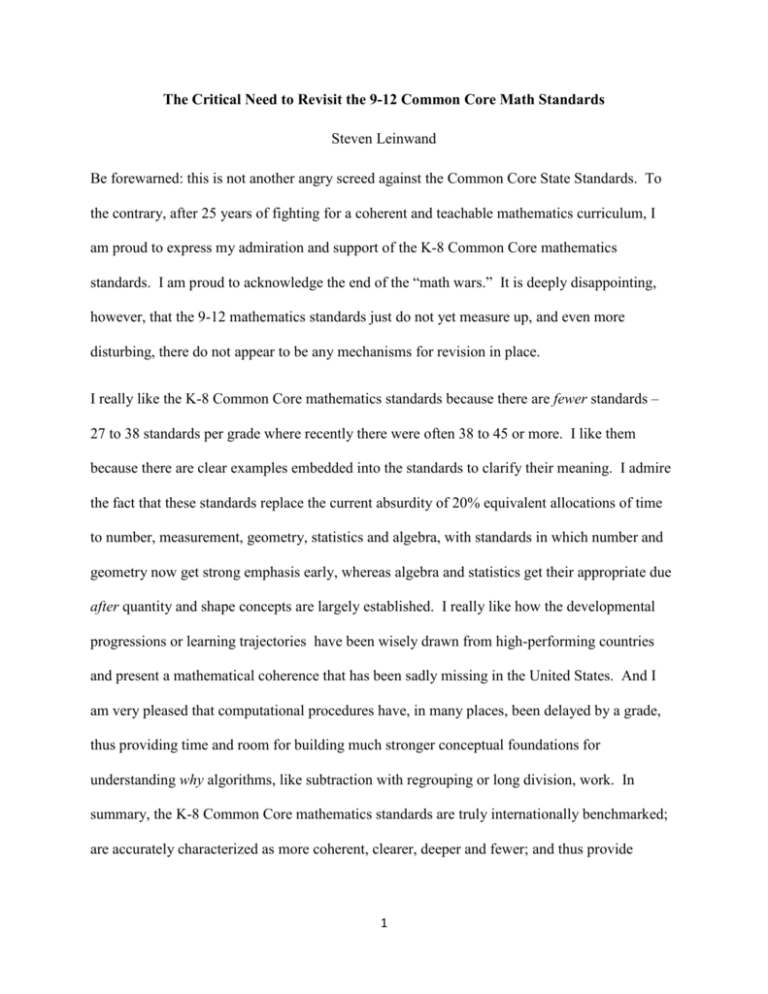
The Critical Need to Revisit the 9-12 Common Core Math Standards Steven Leinwand Be forewarned: this is not another angry screed against the Common Core State Standards. To the contrary, after 25 years of fighting for a coherent and teachable mathematics curriculum, I am proud to express my admiration and support of the K-8 Common Core mathematics standards. I am proud to acknowledge the end of the “math wars.” It is deeply disappointing, however, that the 9-12 mathematics standards just do not yet measure up, and even more disturbing, there do not appear to be any mechanisms for revision in place. I really like the K-8 Common Core mathematics standards because there are fewer standards – 27 to 38 standards per grade where recently there were often 38 to 45 or more. I like them because there are clear examples embedded into the standards to clarify their meaning. I admire the fact that these standards replace the current absurdity of 20% equivalent allocations of time to number, measurement, geometry, statistics and algebra, with standards in which number and geometry now get strong emphasis early, whereas algebra and statistics get their appropriate due after quantity and shape concepts are largely established. I really like how the developmental progressions or learning trajectories have been wisely drawn from high-performing countries and present a mathematical coherence that has been sadly missing in the United States. And I am very pleased that computational procedures have, in many places, been delayed by a grade, thus providing time and room for building much stronger conceptual foundations for understanding why algorithms, like subtraction with regrouping or long division, work. In summary, the K-8 Common Core mathematics standards are truly internationally benchmarked; are accurately characterized as more coherent, clearer, deeper and fewer; and thus provide 1 powerful guidance to teachers. As a result, the K-8 standards are simply fairer, more coherent, and more teachable. Unfortunately, none of these positive characteristics apply to the 9-12 Common Core mathematics standards. It is almost as if the developers ran out of time, energy and wisdom after producing the K-8 standards. The 9-12 standards are not internationally benchmarked; they provide no alternatives to the underperforming Algebra 1, Geometry, Algebra 2 sequence that exists virtually nowhere else in the world. Instead of organizing the 9-12 standards into far more sensible integrated Math 9, Math 10 and Math 11, we are given aggregated standards for Quantity, Algebra, Functions, Geometry, Modeling, and Statistics, with many standards so broad they cross course lines. Most debilitating is that we have lost the essential characteristics of fewer and deeper, as teachers are expected to squeeze 156 standards into three years of instruction. We make no progress and serve few students when teachers are asked to teach as many as 59 standards within a single course, resulting in more-of-the-same race through the curriculum with far too little mastery or understanding. While the coherent learning trajectories and progressions are so clearly delineated across grades within the K-8 domains, the complete absence of progressions at 9-12 severely undermines their power and quality. In summary, the 9-12 mathematics standards seem to be an afterthought and, to be blunt, they are essentially unteachable. Then there is the mathematical content itself. To their credit, the standards emphasize functions, modeling and statistics, but they fail to remove any of the increasingly obsolete algebra to make room for these critical new emphases. To their credit, the standards move significant chunks of rational, teachable algebra to 8th grade, but fail to remove much more than matrices and secants from what remains for 9-12. Why do students with no intention of a STEM career need to learn 2 about imaginary and complex numbers? Why is the focus on polynomials still so strong when its role in non-calculus mathematics is so small? Algebra 2 may correlate with college success, but the reality is that most of Algebra 2 content has very little to do with career readiness, workplace success or effective citizenship as pointed out so powerfully in a recent National Center of Education and the Economy report. When essentially 100% of 5th graders move to 6th grade and when essentially 100% of 8th graders move to 9th grade, it makes sense to have a common, undifferentiated curriculum for all students. But when high school feeds students into minimum wage jobs, the military, community colleges, technical schools, minimally competitive colleges and highly competitive universities, it is absurd to have a single set of mathematics standards. Differentiation of content in high schools is essential. Sure the existing 9-12 standards include 56 “+ standards” to denote what is only appropriate for “STEM intending students.” There were only 485,000 STEM majors out of 1.5 million college graduates in the class of 2007. This is from a pool of 2.8 million high school graduates in 2003, out of a cohort of 3.9 million people born in 1985. It is therefore time to ask why the Common Core still includes so much algebraic pre-calculus content that only 1 in 3 college graduates and only 1 in 5 high school graduates are ever likely to need. To date, there is no governance structure for the Common Core. There are no mechanisms to revise or fine tune. It is time for the National Governors Association and the Council of Chief State School Officers to reclaim a leadership role or delegate a revision to a national panel of knowledgeable stakeholders. It is time to acknowledge that the 9-12 Common Core mathematics standards are not strong enough and do not adequately serve students, teachers or society. It is time to partner with Achieve, the National Council of Teachers of Mathematics, the original writing team, PARCC, Smarter Balanced and others to fix what needs to be fixed sooner rather 3 than later so that all the positive aspects of the K-8 mathematics are not lost in the current morass of 9-12. Steven Leinwand is a Principal Research Analyst at the American Institutes for Research in Washington, D.C. and a former president of the National Council of Supervisors of Mathematics. 4
